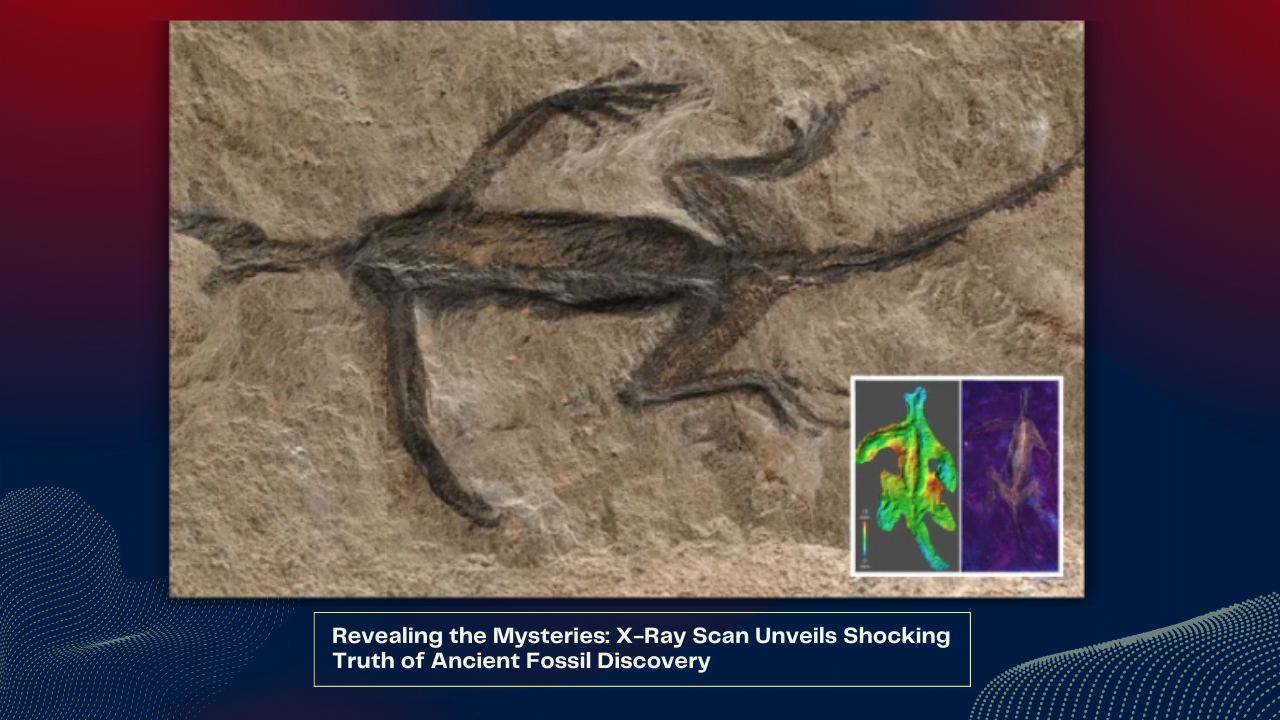
Revealing the Mysteries: X-Ray Scan Unveils Shocking Truth of Ancient Fossil Discovery
The scientific community has long been intrigued by a mysterious fossil unearthed in the Italian Alps back in 1931. This fossil, belonging to an ancient lizard known as Tridentinosaurus antiquus, has left scientists puzzled for decades. Dating back 280 million years, the fossil initially appeared to preserve soft tissue, sparking excitement among researchers. However, recent breakthrough research has uncovered a startling revelation about this ancient creature.
Contrary to initial beliefs, the “soft tissue” observed in the fossil was not organic material but rather black paint. This astonishing discovery was made by a team led by paleobiologist Valentina Rossi from University College Cork, following a meticulous analysis of microscopic samples. The team’s findings, published in a recent study, shed light on the true nature of the fossil’s preservation.
Rossi expressed her initial surprise at the peculiar appearance of the fossil, acknowledging that fossils often present unique challenges. However, the absence of carbonized tissue, a hallmark of preserved soft tissue, prompted the team to delve deeper into the fossil’s composition.
Utilizing advanced analytical techniques such as scanning electron microscopy, energy dispersive spectroscopy, and micro-X-ray diffraction, the researchers unraveled the fossil’s secrets. Their analysis revealed that the material closely resembled manufactured bone black pigment, rather than genuine soft tissue.
While the revelation may have disappointed some scientists hoping for a rare glimpse into ancient biology, Rossi emphasized the significance of the findings. She highlighted the evolution of paleontological techniques, noting the advancements that now allow researchers to examine fossils at the molecular level.
However, questions still linger regarding the origins of the painted fossil. Rossi speculated that the paint may have been applied by individuals attempting to enhance the specimen’s appearance. With visible bones and tiny bony scales exposed, it is possible that the paint was used to embellish the fossil, perhaps in an effort to accentuate certain features.
Despite the unexpected turn of events, the discovery underscores the evolving nature of paleontological research. As scientists continue to unravel the mysteries of the past, each revelation provides valuable insights into the history of life on Earth.
In conclusion, while the fossil of Tridentinosaurus antiquus may not contain genuine soft tissue, its story serves as a testament to the resilience of scientific inquiry. Through meticulous analysis and innovative techniques, researchers continue to unlock the secrets of our planet’s ancient inhabitants, enriching our understanding of the world around us.

